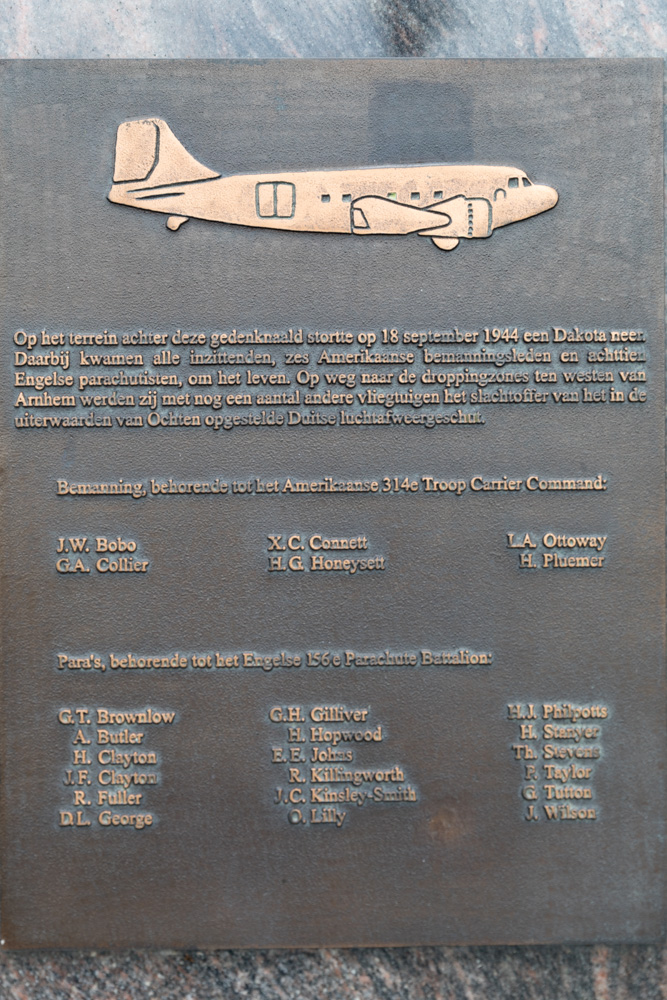On the morning of 18th September 1944, the men of the 156 Battalion Parachute Regiment left their billets in Melton Mowbray. They boarded trucks and made their way to Saltby airfield where they boarded C-47 and C-53 aircraft of the 314th Troop Carrier Group (TCG) who were going to fly them to Arnhem and drop them over the Drop Zones as Operation MARKET GARDEN had begun.

The men of 156 Battalion were split across several locations in Melton Mowbray. The Battalion HQ and HQ Company were billeted at Staveley Lodge on Nottingham Road. ‘A’ Company were originally at Scalford Hall until a disagreement with the Owner, Colonel Colman, then they moved into The Spinney to join Support Company. ‘B’ and ‘C’ Companies were billeted at Newport Lodge on Scalford Road.
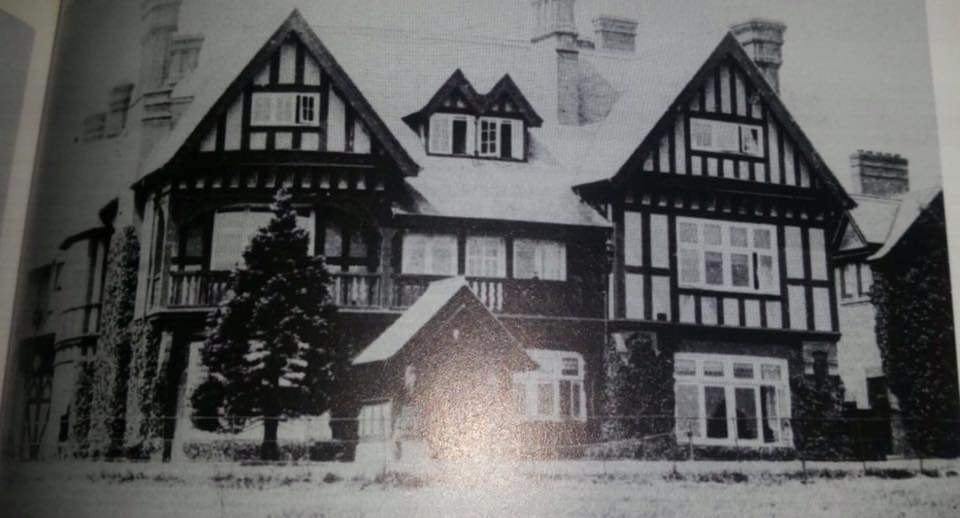
They would be transported in RASC Bedford 3 Ton trucks that would have been parked in a secure parking location on the cattle market car park and driven to the billets in the morning to pick up their passengers. The trucks were marked with a chalk number by the Motor Transport Officer and the men were allocated into ‘sticks’ and assigned to chalk numbers.
Chalk numbers were a simple method of allocating the right group of paras and their equipment to the correct aircraft as the same numbers were also marked on each aircraft fuselage in chalk, hence the name ‘chalk numbers’.
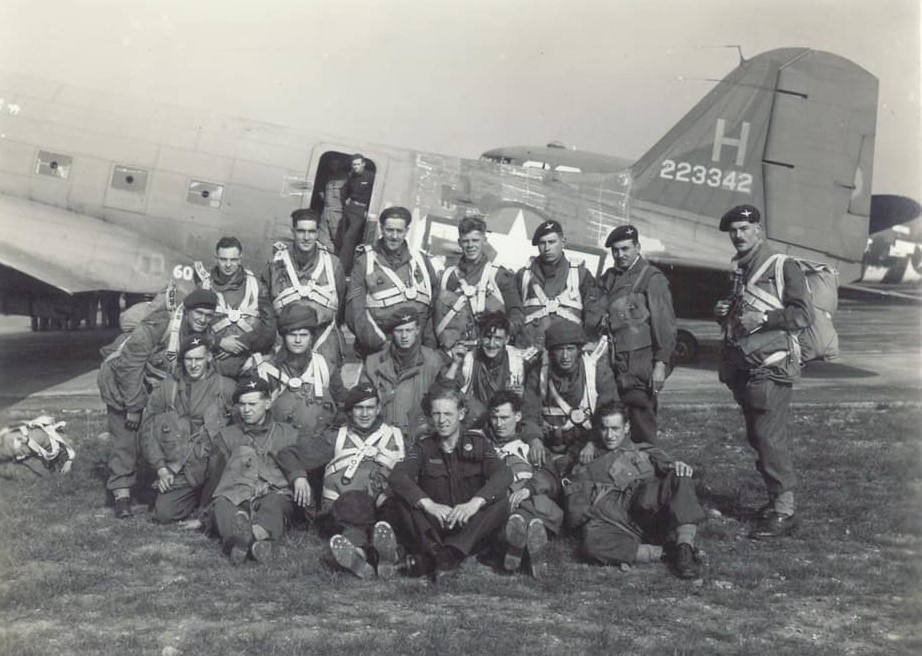
Operation MARKET GARDEN began the day before on the 17th as the 314th TCG flew out paratroopers from No’s 1, 2 & 3 Battalions that were based around the Grantham and Bourne area. Captain Tom Wainwright who was OC Support Company 156 Battalion, looked up at the air armada from their barracks at the Spinney and had a premonition that the operation would not go well.
Jean French, a local girl, who after the war married Cpl John Smith of the REME attached to 156, recalls that day “On the morning of the Battle of Arnhem, we didn’t know what was going on, all the paratroopers were confined to barracks. That morning, the sky was suddenly full of aircraft, the noise is something I will never forget.”
One of the ‘sections’ of Support Company was the medium Machine Gun Platoon (MMG) commanded by 2nd Lieutenant Jeffrey Noble aged 19. The 156 Bn MMG was reformed in September 1943 enroute to Bizerta in Tunisia as it made its way for embarkation to Taranto in Italy as part of Operation SLAPSTICK.
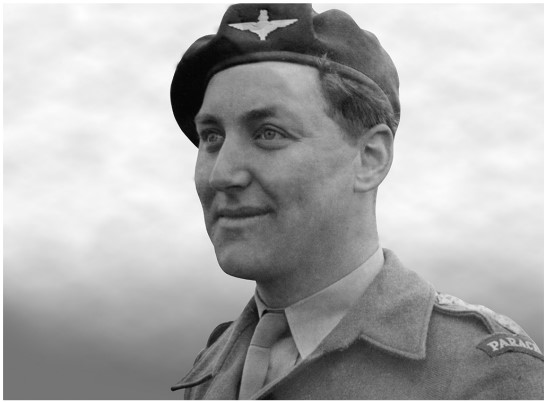
Jeffrey Fraser Noble was born in Ilford, Essex on 15th October 1923 and finished his schooling at Southend High School. On 14th May 1942 Jeffrey joined the Queen’s Royal Regiment where he was put forward for officer training. Following his commission as 2nd Lieutenant he was one of the first cadets to transfer directly into the Parachute Regiment, where he trained first at Hardwick Hall, Derbyshire and then on 8th June he completed the parachute course at Ringway, Manchester. At Ringway, his report described him as very keen and fearless, but a little awkward.
Jeffrey was assigned to the 156 Parachute Battalion and tasked with escorting a draft of 70 men from the UK by ship to join the Battalion based in Sousse, Tunisia. It was here that he met his new CO Lieutenant Colonel Sir Richard des Voeux who took him under his wing, giving him the nickname ‘The Boy’ on account of his youthful looks, and the name stuck.
The MMG Platoon was equipped with four Vickers Machine Guns which were water cooled, tripod mounted weapons with each gun requiring a crew of four to operate effectively but Jeffrey Noble had no experience of the Vicker machine gun.
In order to train all the volunteers that had been drafted from the Battalion, Sergeant John Kinsley-Smith and Sergeant Cliff Brownlow were brought in from other units to assist with forming and training the platoon. Together with ‘The Boy’ they controlled recruitment to the MMG and built a strong unit.
Cliff Brownlow had previously served with the Battalion in its earlier days in India when it was known as 151 Battalion. When the Bn moved from India to Egypt, the number was changed from 151 to 156 as part of a deception plan to confuse the enemy into thinking there were more parachute battalions than there actually was. Brownlow went on to become Jeffrey Noble’s 2i/c.
The Medium Machine Gun Platoon had a strength of 36 men that were sub divided into Sections and Sub-Sections as follows:
- Platoon HQ
- No. 1 Section
- No. 1 Sub Section
- No. 2 Sub Section
- No. 2 Section
- No. 3 Sub Section
- No. 4 Sub Section
In addition to their own personal kit, each member of the MMG had to carry 2 – 3 belts of ammunition for the Vickers machine guns.
Jeffrey Noble and the rest of the MMG were aboard aircraft identified as Chalk #618 & #619 . Both these aircraft were operated by the 32nd TCS and 50th TCS respectively.
Chalk #618 & #619 were part of Serial A-31 provided by the 314th TCG as part of the MARKET #2 mission. Their objective being DZ-Y near Arnhem dropping much needed reinforcements for Lt Col John Frost’s men who were holding the North end of the Arnhem highway bridge crossing the Rhine.
The main body of the 11th Bn who were billeted at the militia camp on Welby Lane, and the 156 Bn took off from Saltby between 1100 and 1120hrs aboard the Dakota’s of the 32nd & 50th Troop Carrier Squadron (TCS) from the 314th TCG. The take-off was originally planned for 08:00hrs but was delayed due to fog.
Due to the weather conditions over England, it took longer for the formation to form up, but as the weather cleared, the formation came together.
As Jeffrey Noble’s aircraft (Chalk #618) flew across the English countryside, a parachute on one of the supply containers slung to the underside of the aircraft came loose, most probably as a result of bad packing. Consequently, the pilot, 1st Lt Glenn E Purkey, was finding it difficult to keep the aircraft flying straight, level and in formation.
The crew chief, T/Sgt Harry R W Ray, approached Noble and asked if the container could be jettisoned. This was something that Noble did not want to do as the container was filled with ammunition for the Vickers machine guns.
There was a plan that the Guards Armoured Division would be on the ground at DZ-Y to greet the paratroopers when they landed, but he knew from previous experience in North Africa and Italy that plans rarely went to as expected. However, it was finally agreed that the container was to be jettisoned and consequently, the release lever was pulled.
As the container fell away, the parachute and rigging lines became tangled and caught on part of the aircraft causing the container to remain hung up and banging against the bottom of the tailplane. This could potentially cause several issues such as if the paratroopers were to jump, there was a risk that their parachutes could get caught up on the container. Another issue was that if the aircraft was to land, the container could cause the aircraft to crash on landing.
Consequently, for a while the aircraft fell out of formation and circled as various ideas were discussed between the crew and passengers. There were several ideas put forward on how to release the container and its parachute, some of which were quite bizarre. One idea was to tie a bayonet to the aircraft broom and dangle a ‘volunteer’ out of the aircraft door to try and cut it free.
Unfortunately, it could not be released, so an emergency landing at an American base in East Anglia was authorised. The aircraft mad a safe landing and on stopping, the paras jumped out, cut the container free and then made scarfs out of the parachute after cutting it into strips. In a later letter from Lt Noble, he indicates that the scarves were vivid in colour so could have been either red, green or yellow.
The container had caused damage to the aircraft structure and the pilot declared that the sortie was over and the aircraft was U/S. Additionally, neither the pilot or his co-pilot knew the way to Holland from their current location as the Navigator was in the lead aircraft.
Finally after a few ‘technical adjustments’ with a sledgehammer, the paras persuaded the aircrew to take off and head East until they could see the flak.
The other aircraft that was carrying the remaining half of the MMG was Chalk #619 43-15180 being flown by Captain Leonard A Ottoway and this was the lead aircraft in the 50th TCS formation and as such was equipped with the SCR-717 radar and extra crew members.
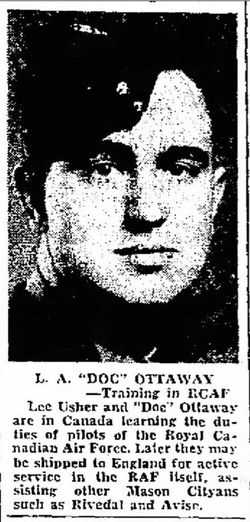
Leonard Ottoway was an American from Oklahoma in Texas but earned his wings whilst serving the the Royal Canadian Air Force prior to transferring tot he United States Army Air Force.
At about 13:45 Hours, just after Chalk #619 had passed the Initial Point (near the village of Vught) whilst approaching the DZ, it was hit by enemy anti aircraft fire. It was one of five aircraft transporting troops of 4th Parachute Brigade hit by flak at around 13:45hrs.
Chalk #619’s LH engine and fuel tank were hit and the underside of the aircraft started to burn including the underslung storage containers. Other aircraft crews from the 314th noticed that #619 moved out of formation at about 14,000ft and the landing gear was lowered. It is believed that this was due to hydraulic failure rather than being manually selected down ready for a landing.
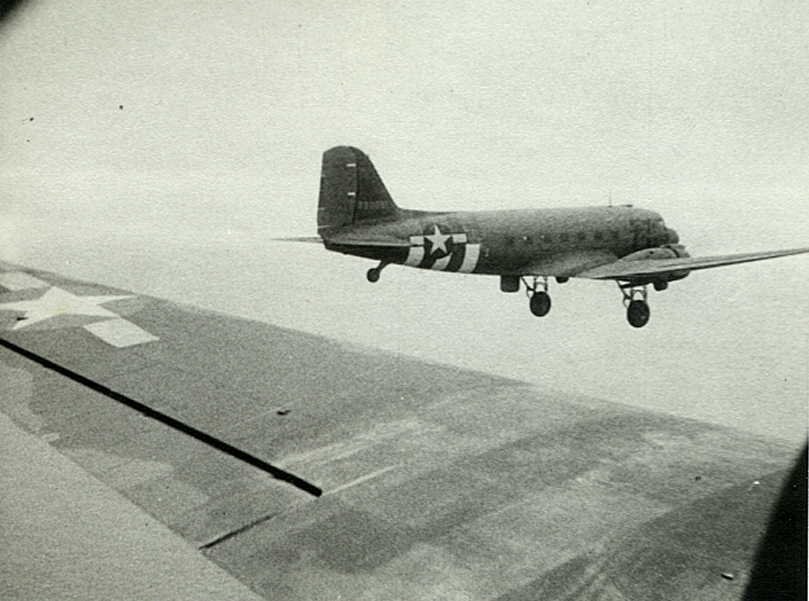
As the aircraft struck the ground, the undercarriage broke off upon impact one of the fuel tanks exploded and the LH wing broke off resulting in the aircraft turning over onto its back and catching fire. The crew and paratroopers had no chance of survival, and no parachutes were observed coming from the stricken aircraft. Tragically, all those onboard were killed in the crash except one paratrooper who was thrown clear of the wreckage.
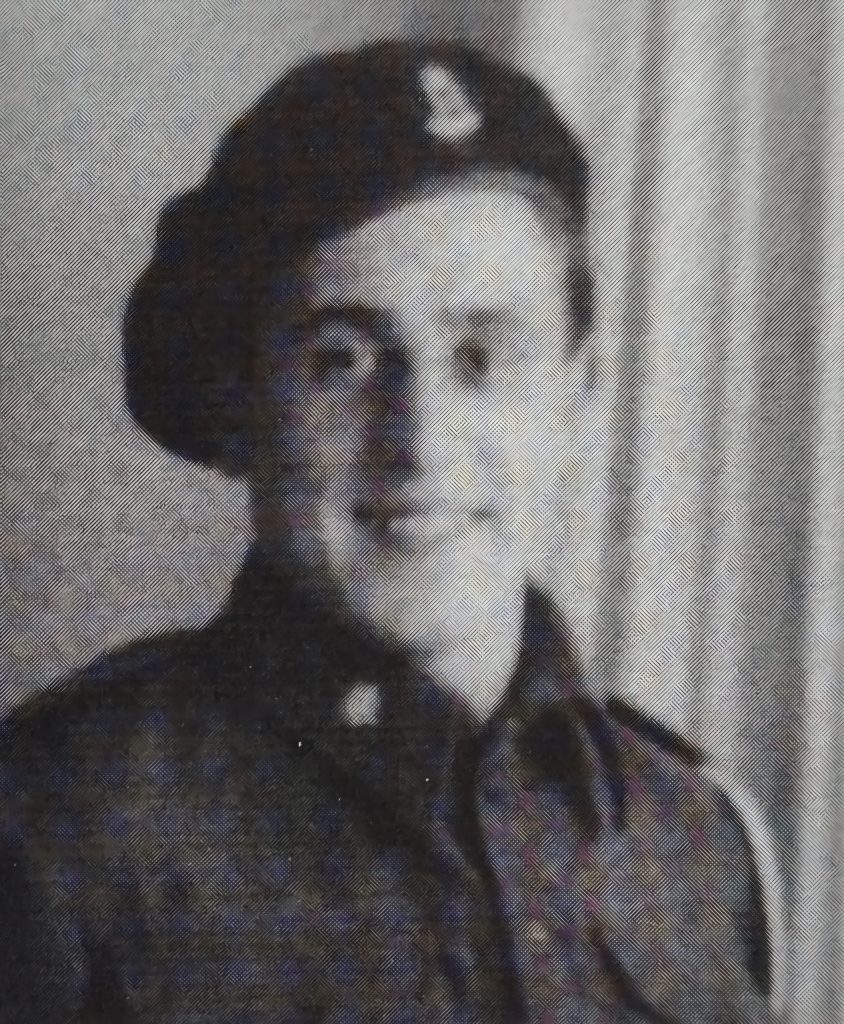
Locals in a nearby house on the Bonegraafesweg in Ochten were the first on the scene of the crash and found Private Tommy Stevens of No 3 Sub Section lying their badly wounded with a broken back as well as sever wounds. They took him to their house where he died of wounds later that day.
Later, Dr Van Driel arrived with a group of locals from Ochten and Eldik to bury the dead in a mass grave next to the wreckage. The individual soldiers could not be identified and as such were buried as unidentified soldiers.
After the war, a service of commemoration was held, a fence was erected around the gravesite and flowers were laid on the graves. In May 1947, the bodied of the paratroopers were exhumed and reburied in the CWGC cemetery at Jonkerbos War Cemetery. As the bodies could not be individually identified, their CWGC headstones bear a special inscription “Buried Near This Spot”.
As for the US crew members, they were exhumed in 1945 and reburied in the US Ardennes Military Cemetery at Neuville-en-Condroz in Belgium. The body of Capt Herbert Pluemer was repatriated to the US at the request of his family and now lies buried in Hillside Cemetery, Scotch Plains, New Jersey.
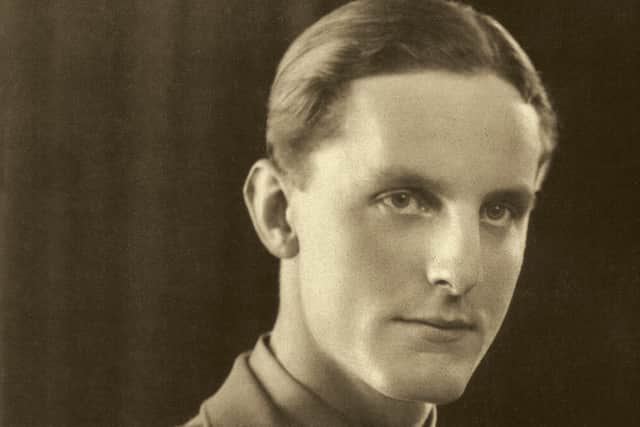
Major John Waddy, Officer Commanding ‘B’ Company of 156 Battalion described what happened: “I stood by the side of the open door of my aircraft as we travelled towards our drop zone near Arnhem. There were 36 Dakota aircraft in the serial carrying the 156 Battalion. Many of the American pilots and crew of these aircraft were green, as our battalion had found to its cost on a previous exercise when they dropped us miles from our DZ. Bearing this in mind, Brigadier Shan Hackett (4th Parachute Brigade Commander) had suggested that I closely monitor our route, which is why I was looking out of the open door. The flak was becoming more intense as we travelled across the Dutch countryside. When the aircraft to my right was hit on the port wing and caught fire, it began a steep dive of around 45 degrees. When it hit the ground, it exploded in a fireball. I looked at my men who were seated each side of the aircraft and who, in the din, had not noticed what had happened. I said nothing.”

Major Geoffrey Powell, Officer Commanding ‘C’ Company was another witness to Chalk #619 being hit. He recalls in his book Men at Arnhem, “Suddenly the flak was real. As I looked back down the line, the plane just behind seemed to lurch to one side, a bright red spot on its port wing glowing in the sunshine before it spread in a stream of flame towards the fuselage. Then the nose of the plane dipped, and it disappeared from view. No parachutes appeared. I knew that it carried men from the battalion, and I tried to stop speculating who was inside it.”
Unaware of this tragedy Jeffrey Noble’s aircraft flew on, arriving at the drop zone near Ede, eight miles from Arnhem. Jeffrey described the drop zone as shrouded in smoke with no signals visible and, without a navigator on board, they jumped solely on the guesswork of Jeffrey and that of the crew chief. Once on the ground, Jeffrey found out what had happened to the other half of the MMG Platoon and shortly afterwards met up with Cpl Harry Bankhead of ‘C’ Company and informed him that due to the Dakota carrying the other half of the platoon, their strength had been reduced from 36 men and 4 guns to 14 men and 2 guns.
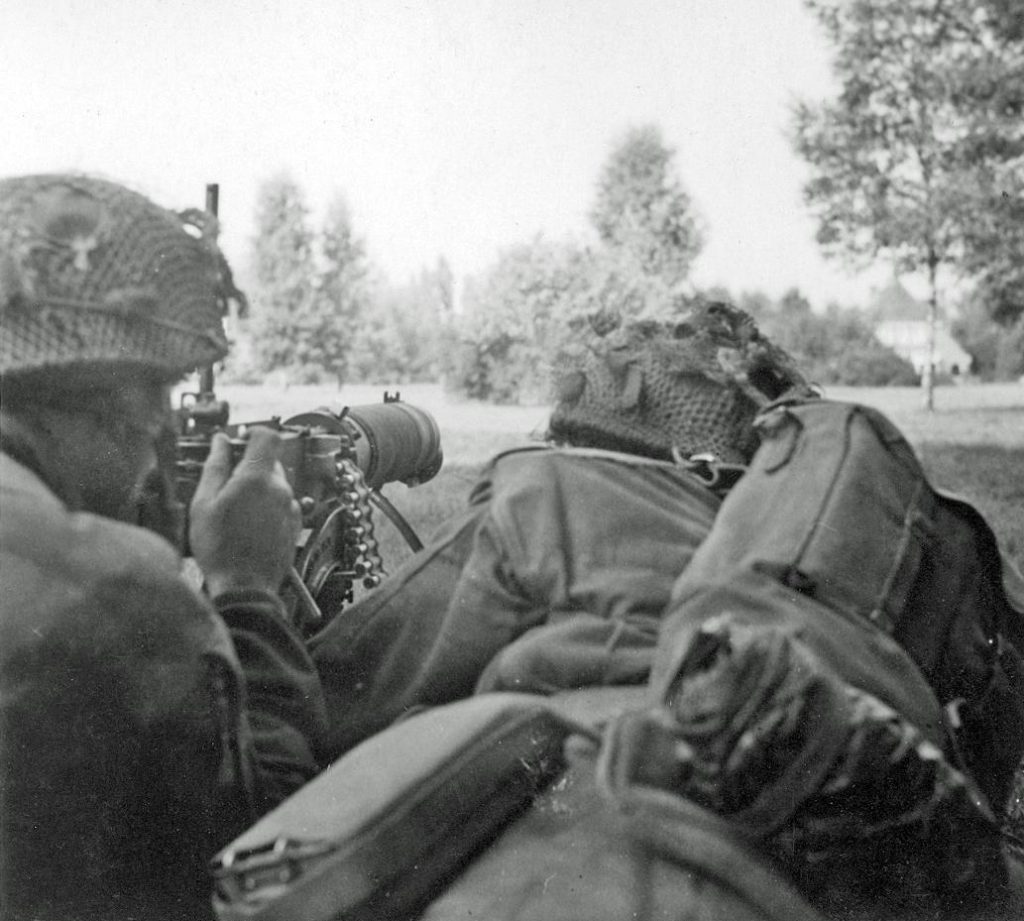
DZ-Y was now the scene of a battle in progress and due to the late exit from the aircraft, several men at the end of the stick landed in the German-occupied territory. After a shaky start, accompanied by occasional shots and explosions, Jeffrey arrived at Battalion HQ where he found he had only one machine gun instead of four and just some 10 men instead of his original 36. Several later turned up wounded – including Sergeant Brownlow and Corporal Ball – and more arrived after various adventures. Jeffrey forcibly seized another gun from a 1st Parachute Battalion jeep, and they formed an ad hoc Section.
The crew lists and passenger lists are detailed below for both aircraft:
Chalk #618 A/c 42-93794 32nd TCS
- Pilot – 1st Lt Glenn E Purkey
- Co-Pilot – 2nd Lt George L Johnson
- Crew Chief – T/Sgt Harry R W Ray
- Radio Operator – Cpl Walter R Rice
- Lt J F Noble (Pltn HQ), POW
- Pte P McCarthy (Pltn HQ), POW
- Sgt C J Brownlow (No 1 Sect Cmdr), POW
- L/Cpl H Littlewood (No 1 Sect Cpl), POW
- Pte G R Burrow (No 1 Sect Orderly), Escaped
- Pte F Eggleton (No 1 Sect), Escaped
- Pte W F C Grounsell (No 1 Sub Sect), POW
- Pte E A Ball (No 1 Sub Sect), POW
- Pte N Robinson (No 1 Sub Sect), POW
- Pte W Mills (No 1 Sub Sect), Escaped
- Pte G O Taylor (No 1 Sub Sect), Escaped
- Pte C Smith (No 1 Sub Sect), POW
- Pte F Turner (No 2 Sub Sect), POW
- Pte W J Greenwood (No 2 Sub Sect), KIA
- Pte R Davidson (No 2 Sub Sect), Escaped
- Pte R Hunter (No 2 Sub Sect), POW
- Pte T Heath (No 2 Sub Sect), Escaped
Chalk #619 A/c 43-15180 50th TCS
- Pilot – Capt Leonard A Ottoway, KIA
- Co-Pilot – 2nd Lt Henry G Honeysett, KIA
- Navigator – Capt Herbert Pluemer Jr. , KIA
- Crew Chief – T/Sgt George A Collier, KIA
- Radio Operator – Cpl. Xon C. Connet, KIA
- Y* – S/Sgt Joseph W Bobo (SCR-717 Radar Operator), KIA
- Sgt J C Kinsley-Smith (Pltn HQ), KIA
- Pte H Clayton (Pltn HQ), KIA
- Cpl O Lilley (No 2 Sect Cmdr), KIA
- L/Cpl J F Clayton (No 2 Sect Cpl), KIA
- Pte H J Philpotts (No 2 Sect Orderly), KIA
- Cpl G T Brownlow (No 3 Sub Sect), KIA
- Pte G Tutton (No 3 Sub Sect), KIA
- Pte A Butler (No 3 Sub Sect), KIA
- Pte D L George (No 3 Sub Sect), KIA
- Pte R Killingworth (No 3 Sub Sect), KIA
- Pte T Stevens (No 3 Sub Sect), DOW
- Pte H Stanyer (No 4 Sub Sect, KIA
- Pte J Wilson (No 4 Sub Sect , KIA
- Pte E E Johns (No 4 Sub Sect), KIA
- Pte P Taylor (No 4 Sub Sect), KIA
- Pte G H Gillever (No 4 Sub Sect), KIA
- Pte R Fuller (No 4 Sub Sect), KIA
Out of the 34 paratroopers and 10 USAAF aircrew who flew to Arnhem in Chalk #618 & 619, 22 were killed when Chalk #619 crashed and 1 later died of wounds. Another Para was KIA in fighting at Wolfheze. 6 Paras made it back to England after escaping as part of Operations BERLIN & PEGASUS and 10 paras were captured and taken as Prisoners of War.
Jeffrey was always haunted by the great loss of life of men under his command on Dakota Chalk number 619 and the 6 US aircrew when their Dakota aircraft was shot down on its approach to the DZ at Arnhem.
It is worth remembering that 156 had suffered the highest percentage losses of all the battalions who fought in the 1st Airborne Division at Arnhem, including the loss of their much-admired commanding officer Lieutenant Colonel des Voeux. With only 37 men out of 600 returning after the battle (10 of whom were evaders and escaped after the battle).
A memorial honouring those who died in the tragic loss of Chalk #619 has been erected at Bonegraafseweg 61-69, Dodewaard.

